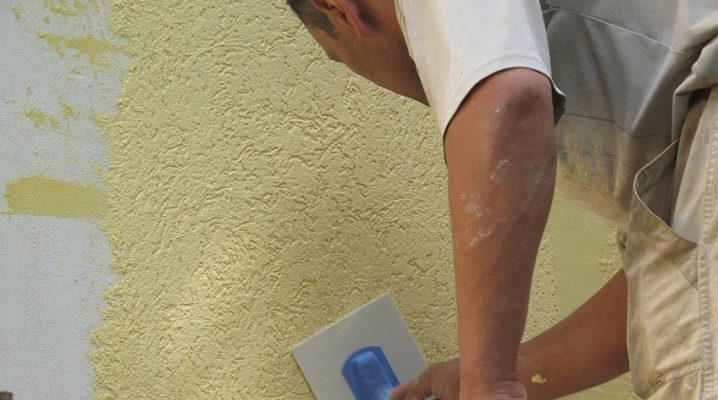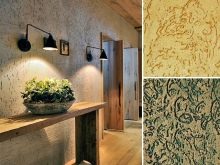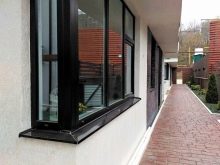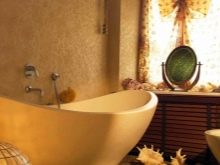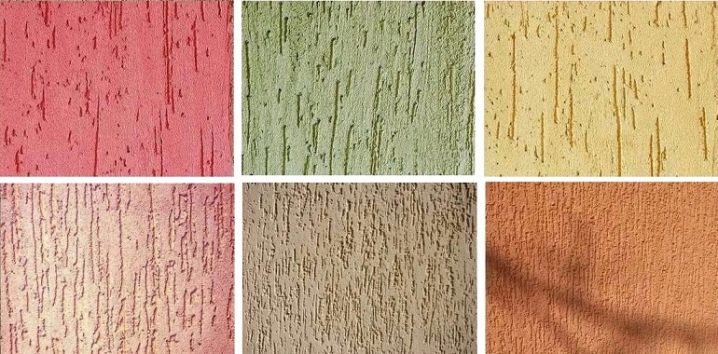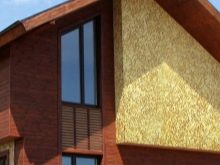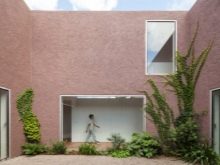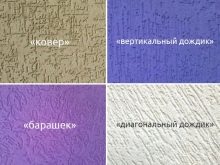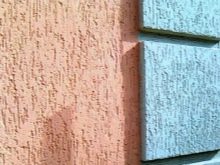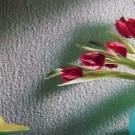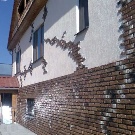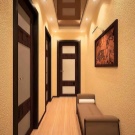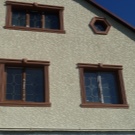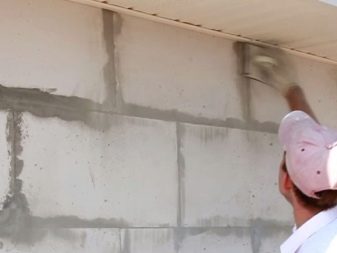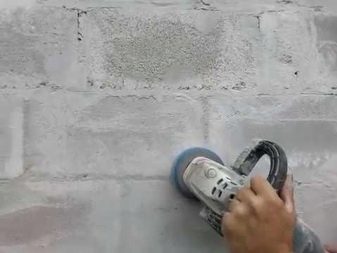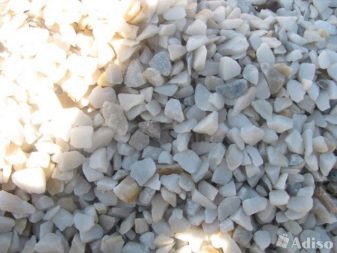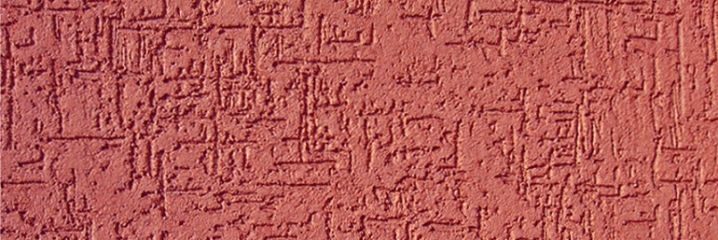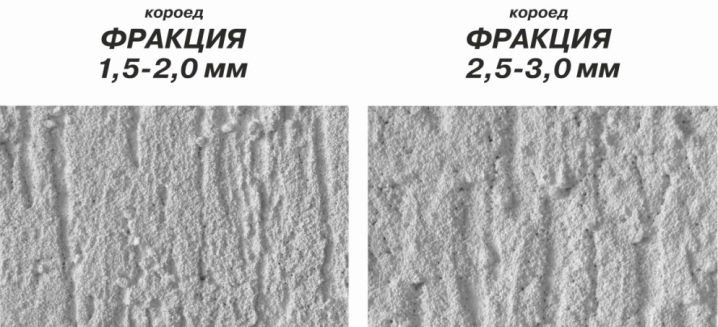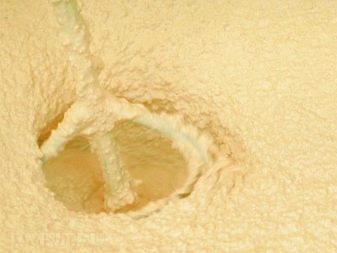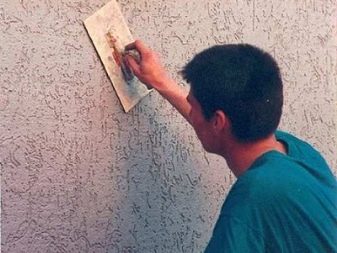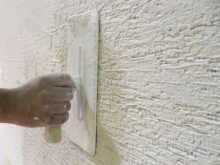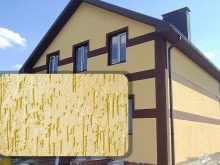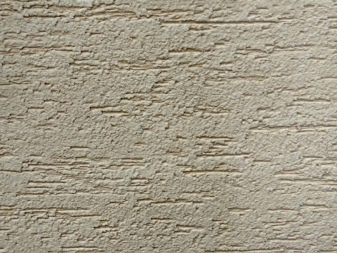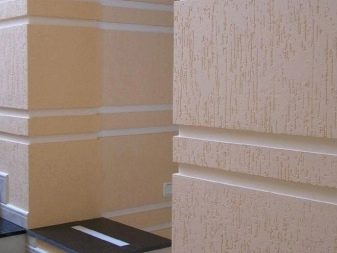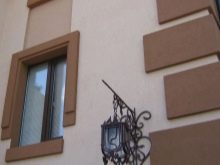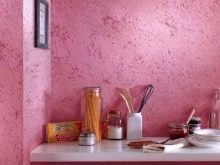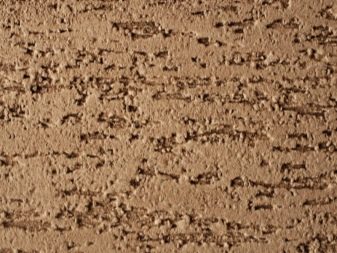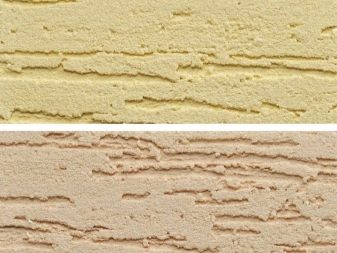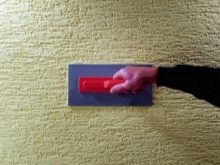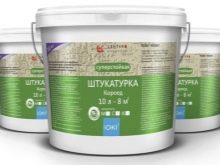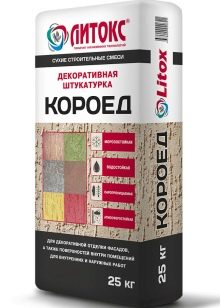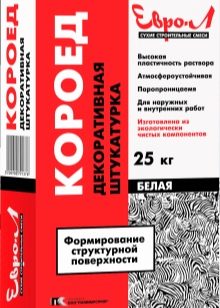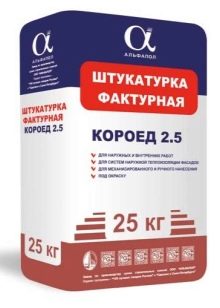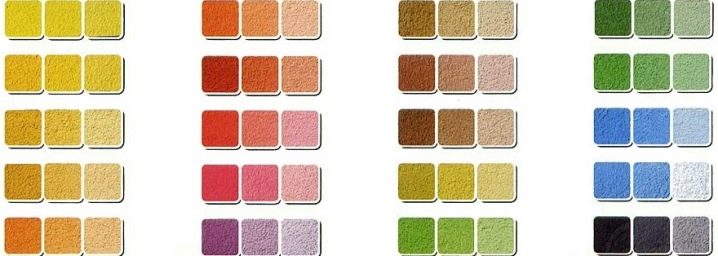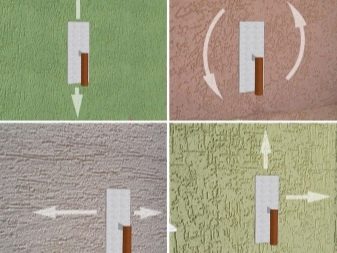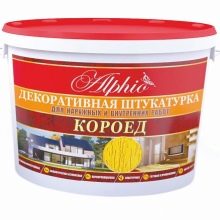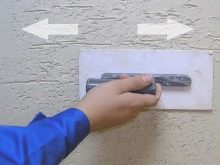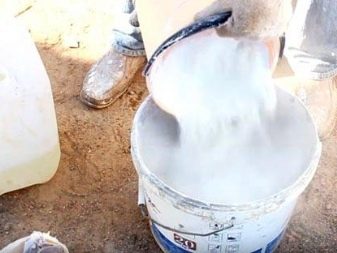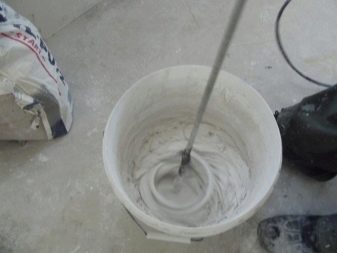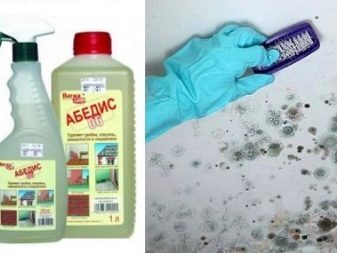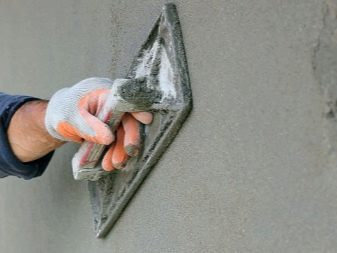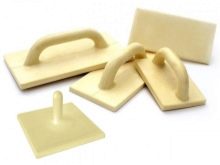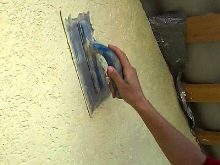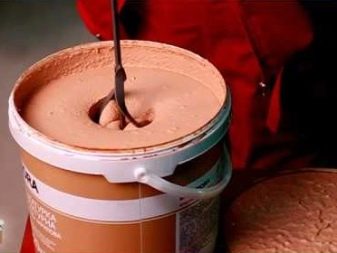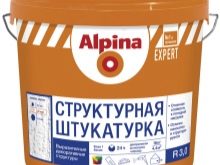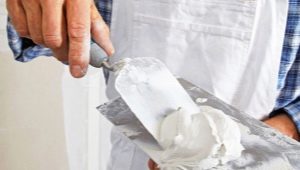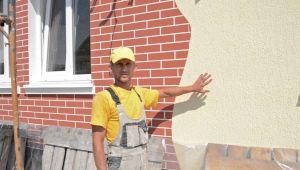Plaster "Bark-eater": features and scope of application
Bark beetle plaster is chosen to create an unusual wall decoration more often than others. This is due to the simplicity of working with it and the unusual appearance of the receiving coating. However, in fact, the work is not as simple as it might seem at first glance.
Special features
Bark beetle plaster differs from all other types of decorative plasters. If we describe the principle of operation when applying it, then we can say that the main part is the correct distribution of the fractions that make up the plaster. It is thanks to them that the formation of a pattern characteristic of the plasters of this type takes place.
"Bark beetle" can have blotches of different fractions - from 0.8 to 3.5 mm. It depends on what exactly the composition is intended for - exterior or interior. By the way The universality of the composition lies precisely in the possibility of versatile use: such walls look good both on the facade and inside the room.
Another distinctive feature of decorative bark beetle plaster can be a variety of textures. With its help, you can create different patterns up to imitation of sheep wool or flowers. However, it must be borne in mind that such patterns still look quite harsh.
Among other things, plastered walls can be further decorated with paint or special varnish. The decor can be with the addition of glitter or matte.
Advantages and disadvantages
Like any finishing material, bark beetle plaster has its pros and cons. The advantages include the following:
- Resistance to temperature fluctuations. The coating without problems withstands both severe frost and high temperatures. Under the influence of the sun plaster does not fade, does not fade under the influence of precipitation. Also, it does not ignite.
- Durability. If a qualitative composition is chosen, and all the work on its application is done correctly, then the “bark beetle” will serve faithfully for many years. Its service life is approximately 15 years.
- Tolerance to mechanical stress. Of course, if you specially peel off or pick up the plaster layer, it will not withstand, however, the composition will withstand small impacts in the form of a directed stream of water or tapping.
- Plaster "breathes". "Bark beetle" has good vapor permeability, but at the same time it keeps warm.
- Acceptable cost. Compared with some other plaster compositions for decorative purposes, the “bark beetle” can even be called a budget product.
- Wide range of colors. Initially, the plaster has a white color, but it is easily amenable to tinting and painting. In addition, with the help of "bark beetle" you can create various patterns.
- Leveling lung imperfections. If there are dim blemishes on the surface, then textured bark beetle plaster helps to hide them. Keep in mind that strong shortcomings will need to be eliminated with the help of puttying - the “bark beetle” will not hide them.
- Environmentally friendly product. The composition does not contain any substances hazardous to humans or the environment, therefore it is considered environmentally friendly. Thus, it can be applied to the walls, even those rooms in which children are constantly located.
- Ease of operation. A little practice, even a person without experience will be able to finish the house or apartment correctly.
- High drying speed. Fully plaster will dry after 1-2 days, depending on the type of composition. It is best to wait another extra day before taking up the finish.
- Ease of care. The walls, finished with plaster "bark beetle", can be cleaned with a vacuum cleaner or a stiff brush.
- Microbial resistance. The plaster layer does not affect mold fungi, so this composition can be used even in rooms with high humidity: showers, bathrooms, pools.
In addition to these advantages, there is a “bark beetle” and disadvantages, among which the most serious are the following:
- Difficulty in repair. With the formation of a chip, neither the novice nor the master can eliminate it. Anyway, the "patch" will be noticeable.
- The need for certain conditions for work. When applying the “bark beetle”, a suitable temperature and humidity level should be maintained, which is possible only in some seasons of the year.
- The need for careful preparation of the base. It must be thoroughly cleaned not only from dirt, but also from previous layers of finishing materials. If you do not carry out this work properly, the plaster will quickly peel off.
- The need for proper preparation of the composition. All materials must not only be of high quality, but also properly prepared. Otherwise, the plaster layer will swell over time, crack, or lose its original appearance after 2-3 years after the start of operation.
Types of formulations
Bark beetle plaster is produced in a variety of technical modifications. They are distinguished by the following criteria:
- type of work;
- base;
- type of;
- release form.
Each of the classifications includes several subtypes with specific properties.
The most popular is the division by type of work. Although most of the compositions are claimed as universal, they still have minor differences, which are expressed mainly in the size of the grain. Base separation is based on what the baby is made of.
In the polymer, silicone or mineral plasters as an ingredient for this, different fillers are used, giving different effect and suitable for different environmental conditions.So, the base is important to take into account always, especially if you get the composition for interior decoration.
Each of the parameters should be considered in more detail.
For interior decoration
"Bark beetle" is often used for interior decoration, especially when it comes to commercial facilities: offices, schools, kindergartens. This is due to the reasonable price of the composition and cost of work on its application. As stated above, pWorking with such plaster is easy, so the services of the workers cost a little.
Indoors, bark beetle plaster with stones of small fraction is used - up to 2.5 mm. Such grooves will look most harmoniously on the walls of the room. In addition, working with such compositions is much easier. They are more economical. Its consumption depends on the size of the grains in the plaster: the larger the blotches, the thicker the layer should be.
In typical apartments and houses, this decorative plaster was most prevalent in such rooms as the kitchen, bathroom, and also on the balcony, on the loggia, in the corridor. Not all formulations are suitable for home: you need to pay attention to their elasticity, heat resistance, resistance to high humidity.
For facade cladding
When facing works, increased strength requirements are imposed on the bark beetle plaster. First, the composition must withstand weather conditions: long-term exposure to ultraviolet radiation, temperature fluctuations, rainy seasons or snow. Secondly, it is important that the plaster withstand the blows of rain or hail. Thirdly, thermal insulation characteristics are not in last place. Fourthly, the “bark beetle” must retain its original appearance for a long time.
In this regard, only a cement-based composition is suitable for the role of material for exterior decoration. In it, and fractions are used more (from 2.5 mm), and it is cheaper. Many people choose for the facade decoration just the “bark beetle” due to the fact that it contains various additives that increase the adhesion with the base.
However, it should be borne in mind that not every house can be decorated with this material. Do not apply bark beetle plaster on plastic, wooden, glass or metal walls.
Mineral
Mineral plaster "bark beetle" is also called cement-lime. They are often used to perform exterior work, cladding facades.Typically, cement-based plaster is sold in a dry form, in the future they need to be independently diluted with water. Color compositions either. It is assumed that after drying the walls covered with bark will be painted.
Interestingly, the compositions can be applied not only manually. Recently, more and more often, to accelerate the work, a mechanized method of application has been used. An important condition is the preparation of the solution only in the amount that will be used at a time, so you need to navigate what area you can plaster, and only then dilute the plaster mix.
If the work is carried out in the summer, then with the sun and heat, the treated walls should be covered with plastic wrap until completely dry. The hardening time can be up to 4 days depending on the surrounding conditions.
Acrylic
Not mineral crumb, as in the previous case, but marble is added to the composition of acrylic plaster. This is partly dictated by its high cost. Also, the high cost is due to the properties of the polymer “bark beetle”, including increased moisture and heat resistance, good resistance to compression and expansion or elasticity, high decorative qualities.
Acrylic compositions are used for lining the premises inside the house: hallway, kitchen, toilet and bathroom, and sometimes even the living room. Stucco may not necessarily be painted. As a rule, it is sold as a ready-made solution, which can be tinted at will. So the duration of plastering work is halved. Fractions are used much less - up to 2.5 mm. This allows you to apply a thinner layer on the walls, as a result, the weight load on them is reduced, and material savings are also achieved.
Potassium silicate
Silicone "bark beetle" is used mainly in facing works or when finishing a facade. To produce this type of plaster from potassium silicate became relatively recent, but it has already established itself from the best side. Manufacturers claim that the silicone "bark beetle" has good vapor permeability, has an increased service life, and is able to self-clean. The price of the composition is on par with acrylic.
Potassium silicate “bark beetle” is intended for use in those regions that have extreme weather conditions.Other plaster simply will not withstand such weathering. We are talking about extreme cold or the constant influence of ultraviolet radiation, as, for example, in the northern areas with a polar day. Also, the silicone composition is resistant to alkalis, which no other species can boast.
Textured
Textured plaster more familiar to the inhabitants. They require a special application technique to obtain the required pattern. So, from the textured "bark beetle" you can make many different varieties:
- "Lamb" when drawing in circles;
- “Orange peel”, when you need to hide irregularities to the maximum, turning them into a design element, and so on.
We can say that the textured plaster is one, and there are many patterns, each of which is obtained by using a special technique. The advantage is that, given the time available, each person will be able to master these or other methods and subsequently carry out the application of plaster not worse than professional craftsmen. On the other hand, you will have to spend some time studying the basics and training on application.
It is also necessary to keep in mind that each of the patterns requires the use of some specific tools that will also need to be acquired.
Scooter
Roller stucco is different from the texture in that here the picture is already set. All you need is to apply it on the walls, smooth it and wait until it is completely dry. Working with such compositions is much easier, especially if you are a beginner, but they did not find much popularity. The whole thing is in a small assortment: there is no such extensive selection of fractions, application techniques and the like.
It does not matter where the roller "bark beetle" will be used - indoors or outdoors. There are mixes for both. As well as textured, they do not need finishing. The maximum that needs to be done is to grind and varnish. The furrows are smooth, but you need to strictly follow the technique of working with the material to make the coating beautiful.
Mostly roller plasters are sold ready to use. When working with them requires a minimum set of tools.
Ready solution
The most convenient way is to purchase a “bark beetle” in finished form. Buckets with plaster are sold in any large construction supermarket. The color of such a solution is traditionally white, but it is possible to tint it with a special dye, in order to give the bark beetle the desired shade. This will help avoid the need to paint the plastered surface.
While working with plaster, sold in finished form, is required to comply with certain rules. They concern not only the storage and transportation, but also the application of the composition. Thus, a ready-made “bark beetle” cannot be frozen, otherwise it will lose its properties.
It is better to apply it at a time when the temperature is 5-25 degrees, otherwise the solution will not fall as it should. It is also strictly forbidden to dilute the finished product with water: if it is too thick, you need to mix it properly. Chances are that it will soften.
Dry mix
In dry form, cement plasters with mineral chips are more often sold. For many, this solution is suitable because the mixture can be stored for a long time, and if all conditions are met, then it will not lose its performance. In addition, you can dilute such a number, which is enough for exactly one time, and not a single drop is not in vain.
When working with dry material it is extremely important to observe the indicated proportions. "Bark" from different manufacturers bred in different ways. The ratio of water and dry mix is indicated on the package, but usually it is 4 parts of the mix to one part of water.The solution turns out to be viscous, reminiscent in consistency of mashed potatoes.
The whole variety of “bark beetle” plasters will allow you to choose exactly what is necessary taking into account the specifics of the work being carried out and the available experience. Approach the choice responsibly, so that you don’t have to regret about wasted money in the future.
Colors and design
Bark beetle plaster is sold in white color, which can be changed at will. To do this, use either special colors that are added directly to the finished composition, or paint dried walls. The first option takes less time, but the difficulty is in correctly calculating the amount of color, because all the walls should have the same color, and when the solution is applied with a break of several days, it is difficult to achieve this. In the second case, additional efforts will have to be made.
As for the design, with the help of this plaster it is possible to achieve different effects if applied with various tools: round for “lamb”, movements from top to bottom for “rain” and so on. There are lots of options, it is only important to understand what you want to achieve in the end. Here are a couple of different techniques:
- Leveling diagonally from the upper left to the lower right for diagonal grooves.
- Alternating leveling is horizontally, then vertically. It turns out the picture, like a woven fabric. This technique is called "carpet".
Tips for choosing
To make the right choice of material and not make a mistake, you just need to follow the following guidelines:
- Buy bark beetle in a good store. So you half eliminate the risk that you sell a low-priced product.
- If you have any doubts about the quality of products, be sure to ask the seller for a certificate of conformity. Counterfeit goods are not supplied with such.
- Pay attention to storage conditions. They must meet all standards of storage of bark beetle plaster: temperature - 5-25 degrees, low humidity.
- The manufacturer must be known, with a good reputation. You should not buy a cheap Chinese equivalent. Most likely, you will throw away money for a wind, having lost as a result also time.
- Be sure to check the expiration date of the plaster. The fresher the composition, the better, since it has the most good technological characteristics.
Application details
When drawing it is necessary to pay attention to all steps, beginning from preparation of walls and finishing with varnishing. Each of these stages is complex in its own way, and only knowing all the nuances can a good result be achieved.
Composition preparation
If you have purchased a ready-made mortar, you will not have to mess around with it much: you just need to mix the plaster thoroughly. This will allow raising the settled “bark beetle” crumbs to the surface, evenly distributing them in the whole mass of the composition. If this is not done, then it will turn out that some parts of the wall will be completely without grain, while others will be literally stuffed with some of them. For mixing it is worth using a drill with a special nozzle "mixer".
As for dry mixes, then everything is not so simple. It is necessary to measure the approximate amount of dry powder, which will be enough to cover a certain plane at a time. Next, you need to dilute it with water, mix thoroughly with a drill with a nozzle "mixer".
The longer you stir, the higher the likelihood that the solution will turn out without lumps and will fall more evenly. In extreme cases, you can stir by hand.
Keep in mind that the bark beetle dries out within 30 minutes, so too much solution will not be needed. Using ready-made, pour it in portions in a special dish, and keep the remaining plaster tightly closed.
Foundation preparation
The walls must also be prepared for the application of plaster. To do this, their first thing to do is to clean any kind of pollution, mold. If there are precedents for the appearance of mold fungi, then you need to locate these places locally (and preferably the entire wall) with an antiseptic. After it dries out, you need to prime the surface. This will increase its adhesive qualities. Priming should be carried out twice with a break in the day. Especially it concerns the performance of facade works.
In the presence of large chips, cracks, irregularities of the wall, it is necessary to putty. The “bark beetle” can hide small mistakes, but it is powerless against obvious imperfections. In case there is no possibility to correct the strong curvature of the walls, use the technology of "orange peel", which turns ugly waves on the surface into an interesting design idea.
Drawing
Putting plaster can be carried out manually or in the mechanized way. In the second case, you need expensive equipment.It is cheaper not to rent it, but to hire a brigade that will carry out all the plastering work in a few hours, and the speed of applying the plaster by machine is 5-6 times higher. So, in one work shift, professionals can handle 50-60 square meters of space.
If the manual method is chosen, then first decide how the plastering will proceed: bezmajachny way or by beacons. When installing the beacons will require more of the composition, so if the walls are relatively flat, it is better to abandon them. Drawing is made from below up. The solution is pounced on the surface, and then leveled. The technology of applying a raw layer does not differ from working with any other decorative plaster.
Formation of the bark beetle texture
After the draft layer has been applied, it is time to start making a pattern. For this you need two tools: a float and a grater. Gladilka is a flat plate, the surface of which is smooth. It is used to smooth the plastering layer. Grater in appearance resembles a smoothing machine, but here the plate is embossed. Grater is needed for a small finish plastered walls after hardening "bark beetle".
So, all that is required is to drive with a tiller in the chosen direction with a little pressure.Movement should be smooth, unhurried, but sure. It is important to guide the tool in the same direction so that the pattern is the same on all walls.
The composition that remains on the tiller, you need to throw in a separate container. It is unsuitable for further use, since it is impossible to work with thickened bark beetle. Unfortunately, these surpluses will have to be thrown out.
After the plaster dries, “walk” on the surface with a float to remove the sharp bumps. There is no need to rub the surface strongly, otherwise the design will be lost.
Finishing
Dyeing or varnishing of the finished surface can be used as a finishing finish. In the case of painting it is necessary to choose water-soluble paints that best emphasize the texture of the walls. Also note the possibility of double staining:
- First, with a brush, fill all the grooves in the plaster with color. Make sure that the layer was thin, not “clogged” the gap. The protruding parts are quickly wiped.
- Next, using a roller is applied a different color. It turns out that in the depths of the wall of one shade, and on the surface - another.
When working with lacquer it is recommended to use a brush, because with the help of it you can best paint over hard to reach places. Do not use a spray bottle. Some builders recommend leaving the bark beetle as it is. If it was previously tinted, then this solution makes sense.
Useful recommendations
Experienced craftsmen give a few tips on how to make work with bark beetle plaster as simple as possible:
- You do not need to set too high a bar, especially if you are a beginner. Many plan to work half of the wall in half an hour of work, although in reality they are able to plaster only 1 square meter. m. Throwing too much plaster, you risk half just throw.
- To practice, choose an inconspicuous section of the wall and try to apply the plaster on it. As a rule, after an hour of training, even beginner builders feel quite confident.
- To avoid joints between the plaster, use masking tape. He will help to impose layers end-to-end, as a result of convex seams will not.
- If plastering is performed indoors, try to prevent drafts.This leads to the fact that the plaster "bark beetle" irregularly hardens and loses some of its strength properties.
Manufacturers and reviews
Plaster solutions "bark beetle" offer many companies, but only a few have earned the complete trust of consumers. Among them:
- Alpina. The manufacturer offers universal formulations that are suitable for both facade and interior. Structural plasters from this company belong to the professional category, that is, some experience is needed to work with them. However, buyers only respond in the best way to products.
- Ceresit. Ceresit plaster can rightly be called the most popular in the Russian market of building materials. They are of high quality, durable, easy to work with. The manufacturer shares the "bark beetle" for work inside and outside the building, but there are also universal compositions.
- "Miners" . This manufacturer from Russia produces plaster compositions that are not inferior to foreign ones in quality. Dry mixes prevail in the assortment.
Beautiful examples in the interior
The beautiful walls and ceiling in the hallway, decorated with "bark beetle", make it look like a cave.
Often, the "bark beetle" is chosen for finishing the facades of private houses, since it is not only functional, but also has an attractive appearance.
Country cottage, the facade of which is faced with a combination of "bark beetle" and false brick, looks modern and soundly.
In the next video, see the master class on applying plaster "Bark beetle".
